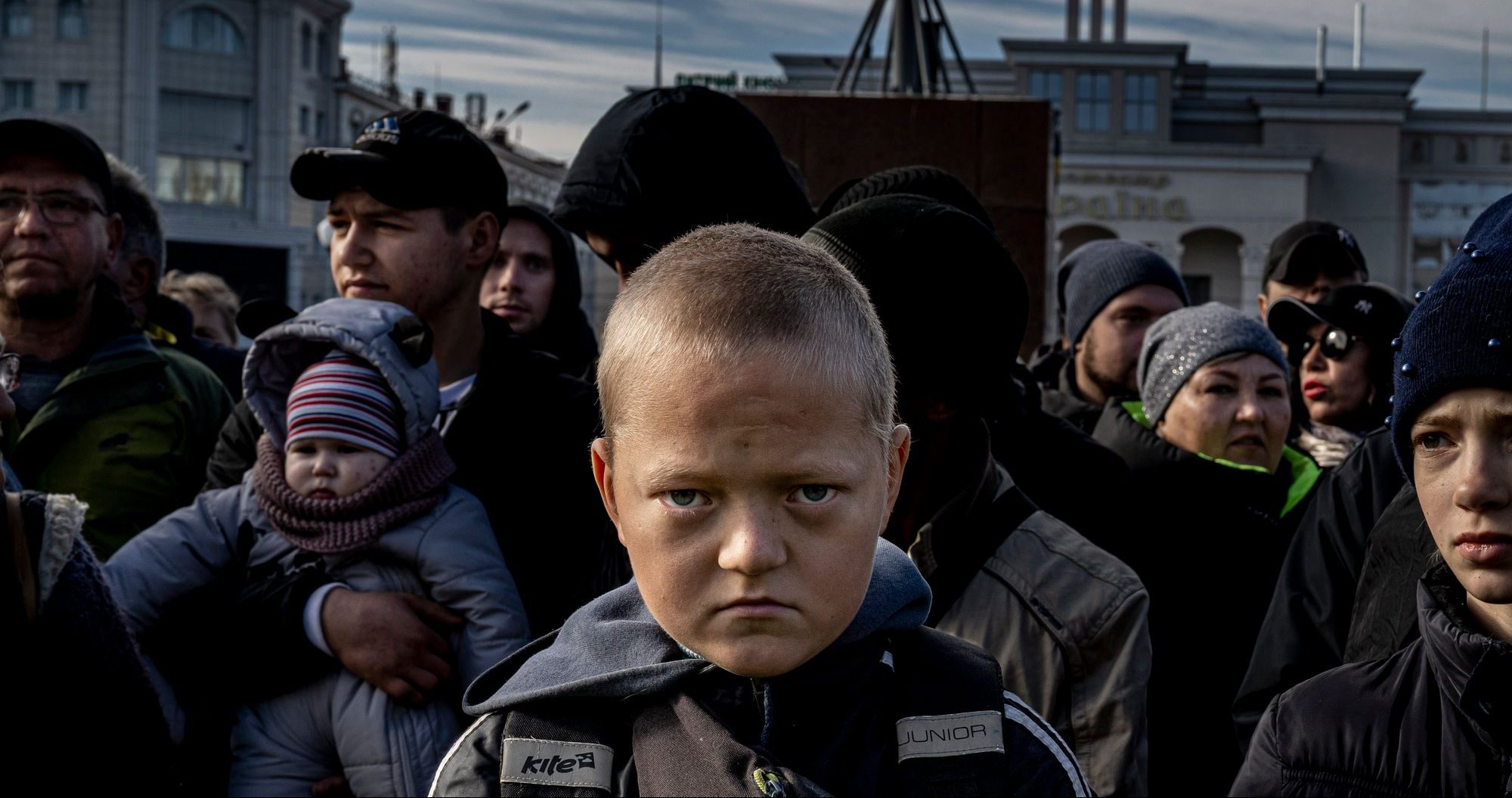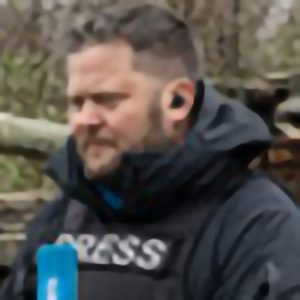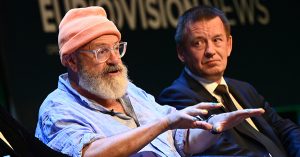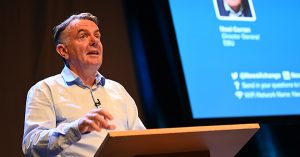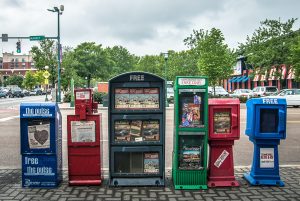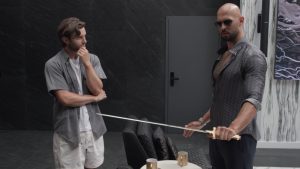Along with photographer Andras D. Hajdu I was among the first journalists to enter Kherson after the city had been under Russian occupation for eight months.
This meant we knew little about what would meet us there.
One gruesome story was that the Russians hanged a teacher in the city square, but nothing could be properly confirmed.

We knew the Russians had fled in a hurry after destroying the city’s water supply.
Driving into the city in an old Ukrainian army bus you could see the heavy fighting that had taken place. The Russians had withdrawn they said, however, to us – it didn’t look like it had happened very voluntarily.
The battlefield was littered with blown up armoured cars and the main bridge into the city was destroyed.
Along the road people greeted us with Ukrainian flags like we were the liberators. My fixer Natalia told me Kherson once was a stronghold of Russian support. The occupation had changed this.
The bus stopped at the regional administration building. Here we found a city without electricity, running water or mobile network.
A mobile GSM transmitter had been placed on the square but didn’t have the capacity to cater to an entire city desperate to reach out to relatives to say they are still alive.

As we set up our Starlink hundreds of desperate people came to ask us for the code to our network. They had not been able to contact the outside world during the occupation.
The journalist next to me came from Kherson. His parents and grandparents were waiting for him – they had not been able to communicate with each other for eight months. It was touching to see their relief. Everybody was alive. It was a miracle!
At the same time, we could hear shelling both behind and in front of us. The Ukrainian artillery worked hard to suppress Russian shelling.
The reason became apparent quite quickly. President Zelensky was en route to celebrate the liberation. The president was willing to take a big risk to come here and claim back the city.
A large crowd that had appeared to see the journalists looked a bit shocked. The president IS here. Holding a speech Wow. Unthinkable a week ago.
This was the moment when my photographer Andras D. Hajdu took the iconic photo of the boy.
After we published it, many wondered why the boy and the crowd did not celebrate the arrival of Zelensky. We expected them to celebrate.
However, it is not that easy. This population had been isolated and under occupation. They needed time. They were still in a state of shock. A couple of hours later everybody was celebrating, it just took that time.

And they knew, inevitably, that the city would become more dangerous.
The withdrawing Russians almost immediately started shelling the city. In the weeks after the liberation hospitals, bus-stops and residential neighbourhoods were shelled by the Russians. Every day many civilians are injured or killed.
I always thought the Kherson boy – Glib is his name – looks a bit like a young Winston Churchill. Just try to compare the two side by side. There is more defiance in his look than fear. Glib himself has said he thinks he looks a bit to grim. He is not like this, normally he is a happy guy.
The picture tells a story about the psychology of war that cannot be expressed with words. We also have a very strong photo of a girl next to a cluster bomb rocket. The children understand more than we think. They will carry the war with them for the rest of their lives and be the witnesses for coming generations.

